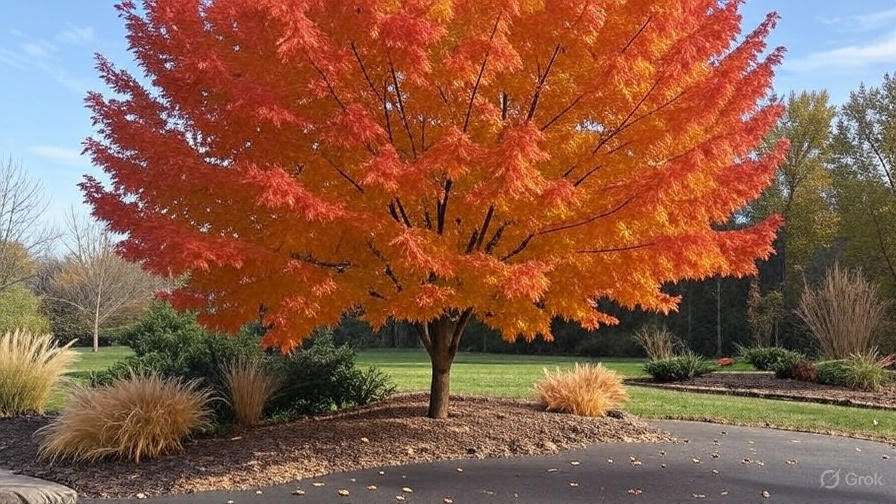Imagine your yard ablaze with fiery red and orange hues every fall, turning heads and sparking envy among neighbors. The Sensation Maple Tree, with its compact growth and dazzling foliage, is the secret to achieving this breathtaking display. Whether you’re a seasoned gardener or a newbie looking to elevate your landscape, this guide unlocks the expert care tips you need to grow a thriving Sensation Maple Tree. As a horticulturist with over 15 years of experience in tree care, I’ve cultivated countless maples and witnessed the transformative power of this cultivar firsthand. In this comprehensive guide, you’ll discover everything from planting to pruning, ensuring your tree flourishes for years to come.
H2: What Makes the Sensation Maple Tree Special? 🌿
H3: Origins and Characteristics of the Sensation Maple
The Sensation Maple Tree (Acer negundo ‘Sensation’) is a cultivar of the boxelder maple, bred for its vibrant fall colors and manageable size. Unlike its wild cousins, this tree boasts a more compact form, typically reaching 20-30 feet tall and wide, making it perfect for urban gardens or smaller yards. Its leaves transition from lush green in spring to brilliant shades of red, orange, and pink in autumn, creating a show-stopping display. According to the University of Minnesota Extension, this cultivar was developed to combine aesthetic appeal with resilience, thriving in a range of climates and conditions.
H3: Benefits of Growing a Sensation Maple Tree
Beyond its stunning appearance, the Sensation Maple offers practical benefits. It provides ample shade, reducing summer cooling costs, and supports local wildlife by attracting pollinators. Its dense canopy also acts as a natural air purifier, filtering pollutants. For gardeners, its relatively low maintenance needs make it a hassle-free choice compared to other maples like the sugar maple. Whether you’re aiming to enhance curb appeal or create a cozy backyard retreat, this tree delivers year-round value.
H2: Understanding the Ideal Growing Conditions for Sensation Maple Trees 🌞
H3: Climate and Hardiness Zones
Sensation Maples thrive in USDA hardiness zones 4-8, making them adaptable to a wide range of climates, from chilly northern winters to milder southern summers. Check your local zone using the USDA Plant Hardiness Zone Map to ensure compatibility. These trees tolerate occasional temperature extremes but perform best in regions with distinct seasons, which trigger their vibrant fall colors.
H3: Soil Requirements
For optimal growth, plant your Sensation Maple in well-draining, loamy soil with a pH of 6.0-7.5. Test your soil using a home kit or send a sample to a local cooperative extension for analysis. If your soil is heavy clay or overly sandy, amend it with organic compost to improve drainage and nutrient retention. Avoid waterlogged areas, as soggy roots can lead to stress and disease.
H3: Sunlight and Location
These maples love full sun (6+ hours daily) but can tolerate partial shade. Choose a planting spot with ample sunlight to maximize foliage vibrancy. Ensure the location provides enough space for the tree’s mature size and avoid planting near structures or power lines. A wind-sheltered spot is ideal, as strong gusts can damage young branches.
H2: Step-by-Step Guide to Planting Your Sensation Maple Tree 🌱
H3: When and Where to Plant
The best time to plant a Sensation Maple is early spring or fall, when cooler temperatures support root establishment. Select a site with at least 20-30 feet of clearance to accommodate the tree’s mature spread. Avoid low-lying areas prone to flooding, as excess water can harm roots.

H3: How to Plant a Sensation Maple
- Dig the Hole: Dig a hole twice as wide and as deep as the root ball. Loosen the soil to encourage root growth.
- Prepare the Root Ball: Gently remove the tree from its container, teasing apart any circled roots.
- Position the Tree: Place the tree in the hole, ensuring the root collar sits level with the ground.
- Backfill and Water: Fill the hole with a mix of native soil and compost, tamping lightly. Water thoroughly to settle the soil.
- Mulch: Apply a 2-3 inch layer of organic mulch (like wood chips) around the base, keeping it away from the trunk to prevent rot.
Expert Tip: Add a handful of mycorrhizal fungi to the planting hole to boost root health. Avoid planting too deep, as this can suffocate roots and stunt growth.
H2: Essential Care Tips for a Thriving Sensation Maple Tree 🌳
H3: Watering Needs
Newly planted Sensation Maples need consistent moisture—about 1-2 inches of water weekly for the first year. Use a soaker hose or drip irrigation to deliver water slowly to the root zone. Once established, water during dry spells, especially in summer. Mulch helps retain moisture and keeps roots cool. Overwatering can cause root rot, so check soil moisture before watering.
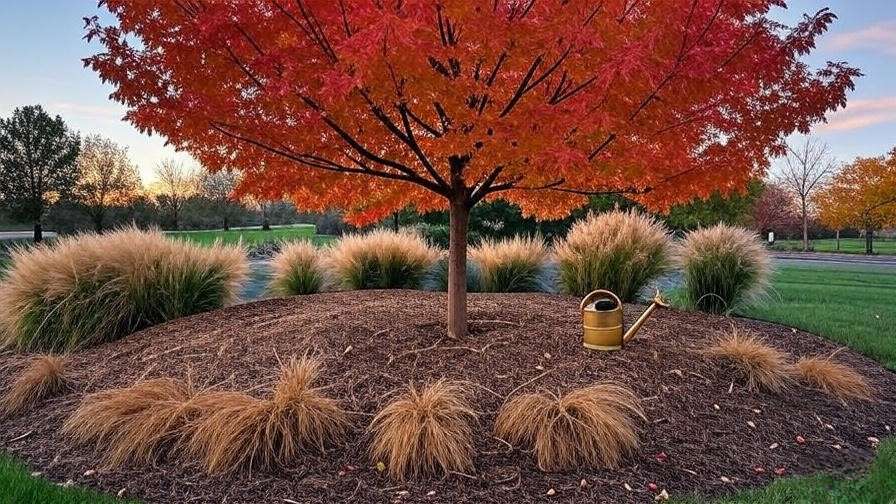
H3: Fertilizing for Optimal Growth
Fertilize in early spring with a slow-release, balanced fertilizer (e.g., 10-10-10 NPK). Apply according to package instructions, spreading it evenly around the drip line. For organic options, compost or well-rotted manure works wonders. Avoid over-fertilizing, as excess nitrogen can weaken the tree and reduce fall color intensity.
H3: Pruning and Maintenance
Prune in late winter or early spring before new growth begins. Remove dead, damaged, or crossing branches to improve airflow and shape the tree. Use clean, sharp tools to make precise cuts. For young trees, focus on establishing a strong central leader. Regular maintenance, like clearing fallen leaves, prevents pest and disease buildup.
H2: Protecting Your Sensation Maple Tree from Pests and Diseases 🐞
H3: Common Pests
Sensation Maples are relatively pest-resistant but may attract aphids, scale, or boxelder bugs. Monitor for sticky residue or discolored leaves. Use insecticidal soap or neem oil for organic control, or consult an arborist for severe infestations. Encouraging natural predators like ladybugs can keep pest populations in check.
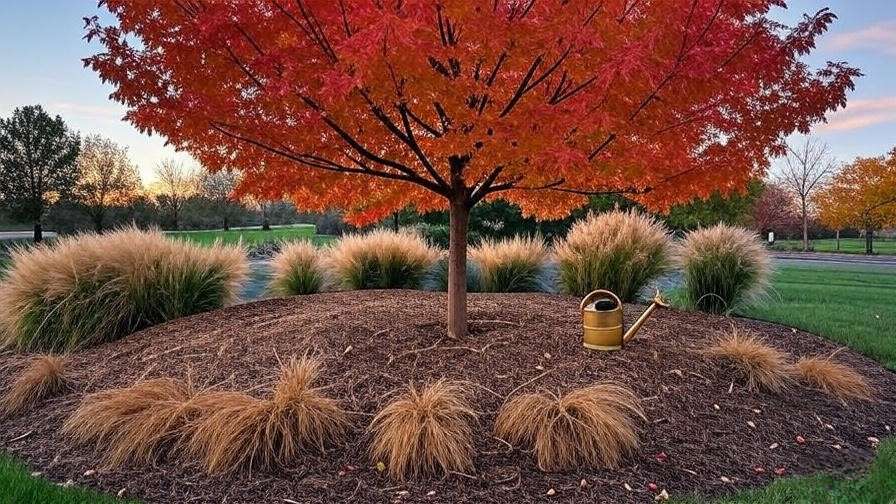
H3: Common Diseases
Watch for verticillium wilt (yellowing, wilting leaves) or tar spot (black spots on leaves). Ensure proper spacing and airflow to prevent fungal issues. Remove and destroy affected leaves, and avoid overhead watering. If diseases persist, a fungicide labeled for maples may be necessary—always follow local guidelines.
H3: Seasonal Care Tips
- Winter: Wrap young trunks with burlap to protect against frost cracks. Add extra mulch to insulate roots.
- Spring/Summer: Inspect for pests and water during heatwaves. Remove suckers or water sprouts to maintain shape.
H2: Enhancing Your Landscape with Sensation Maple Trees 🌼
H3: Companion Planting Ideas
Sensation Maple Trees shine when paired with complementary plants that enhance their vibrant fall colors and compact structure. Consider planting ornamental grasses like Panicum virgatum (switchgrass) or Miscanthus sinensis for texture and movement. Low-growing shrubs such as Spiraea japonica or Hydrangea paniculata add color without competing for space. For ground cover, hostas or ferns thrive in the dappled shade beneath the maple’s canopy. These pairings create a cohesive, visually appealing garden while supporting soil health and biodiversity. Always choose plants with similar soil and light needs to ensure harmony.
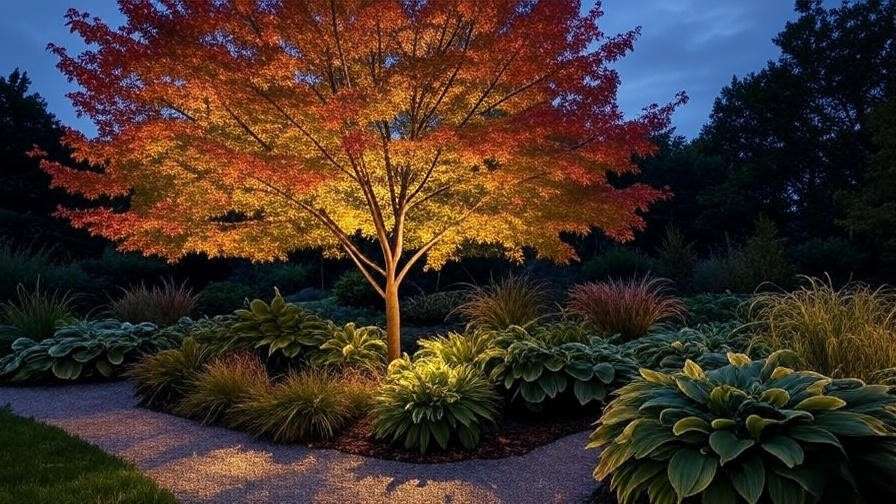
H3: Creative Uses in Landscaping
The Sensation Maple’s versatility makes it a standout in various landscape designs. Use it as a focal point in a front yard to draw the eye, or plant it as a shade tree over a patio for a cool retreat. Its compact size suits smaller urban lots, while multiple trees can form a natural privacy screen along property lines. For larger landscapes, group Sensation Maples with evergreens for year-round interest. Their vivid fall foliage also makes them ideal for framing pathways or highlighting garden beds.
H3: Seasonal Showcase
The Sensation Maple transforms with the seasons, offering dynamic beauty. In spring, its fresh green leaves create a lush backdrop. Summer brings dense shade, perfect for outdoor gatherings. But autumn is the star of the show, with leaves turning fiery red, orange, and pink. To amplify this display, install low-voltage landscape lighting to illuminate the canopy at night. Solar-powered stake lights or uplighting can create a dramatic effect, making your tree the centerpiece of your fall landscape.
H2: Troubleshooting Common Sensation Maple Tree Problems 🛠️
Yellowing leaves often signal issues like nutrient deficiency, overwatering, or poor drainage. Test soil pH and nutrient levels, amending with compost or a balanced fertilizer if needed. Ensure the soil isn’t waterlogged—improve drainage with organic matter if necessary. Slow growth may indicate insufficient sunlight, compacted soil, or root competition. Relocate nearby plants or aerate the soil to encourage vigor. If problems persist, consult a certified arborist for a professional diagnosis. Regular monitoring and early intervention keep your tree healthy and vibrant.
Expert Tip: Keep a garden journal to track your tree’s growth, watering, and any issues. This record helps identify patterns and tailor care over time.
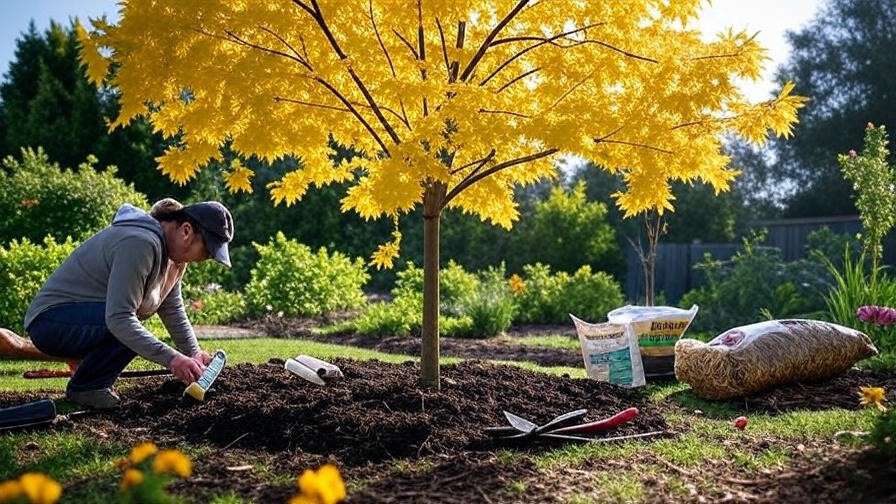
H2: FAQs About Sensation Maple Tree Care ❓
Q1: How fast does a Sensation Maple Tree grow?
A: Sensation Maples grow moderately fast, about 1-2 feet per year under optimal conditions. Proper care, including adequate water and nutrients, accelerates growth.
Q2: Can it thrive in containers or small spaces?
A: While young trees can be grown in large containers, Sensation Maples prefer in-ground planting due to their mature size. Ensure containers have excellent drainage and ample space for roots.
Q3: What’s the best way to protect it from harsh winters?
A: Wrap young trunks with burlap or tree guards to prevent frost cracks. Apply a 3-4 inch layer of mulch around the base (not touching the trunk) to insulate roots.
Q4: How do I know if my tree is healthy?
A: Look for vibrant leaves, steady growth, and no signs of pests or disease. Wilting, yellowing, or sparse foliage may indicate stress—check water, soil, and light conditions.
Q5: Are Sensation Maples prone to specific pests or diseases?
A: They’re relatively resistant but may face aphids, scale, or verticillium wilt. Regular inspection and proper care minimize risks.
H2: Expert Insights: Maximizing the Beauty of Your Sensation Maple Tree 🌟
As a horticulturist who’s worked with maples across diverse climates, I’ve seen the Sensation Maple thrive with thoughtful care. One success story comes from a client in Zone 5 who transformed a barren yard with a single Sensation Maple. By planting in well-drained soil, mulching annually, and pruning strategically, they achieved a stunning tree that now anchors their landscape. My top advice? Invest in soil health—healthy roots are the foundation of vibrant foliage. For long-term success, schedule annual checkups with an arborist to catch issues early and keep your tree in top shape.
H2: Conclusion: Transform Your Landscape with a Sensation Maple Tree 🎉
The Sensation Maple Tree is more than a plant—it’s a statement of beauty, resilience, and seasonal splendor. With its compact size, low maintenance needs, and jaw-dropping fall colors, it’s a perfect addition to any landscape. By following this guide’s expert tips on planting, watering, fertilizing, and pest control, you’ll ensure your tree thrives for decades. Ready to create your own fall masterpiece? Start planning your Sensation Maple planting today, and share your journey in the comments below. Explore our other tree care guides for more ways to elevate your garden!

